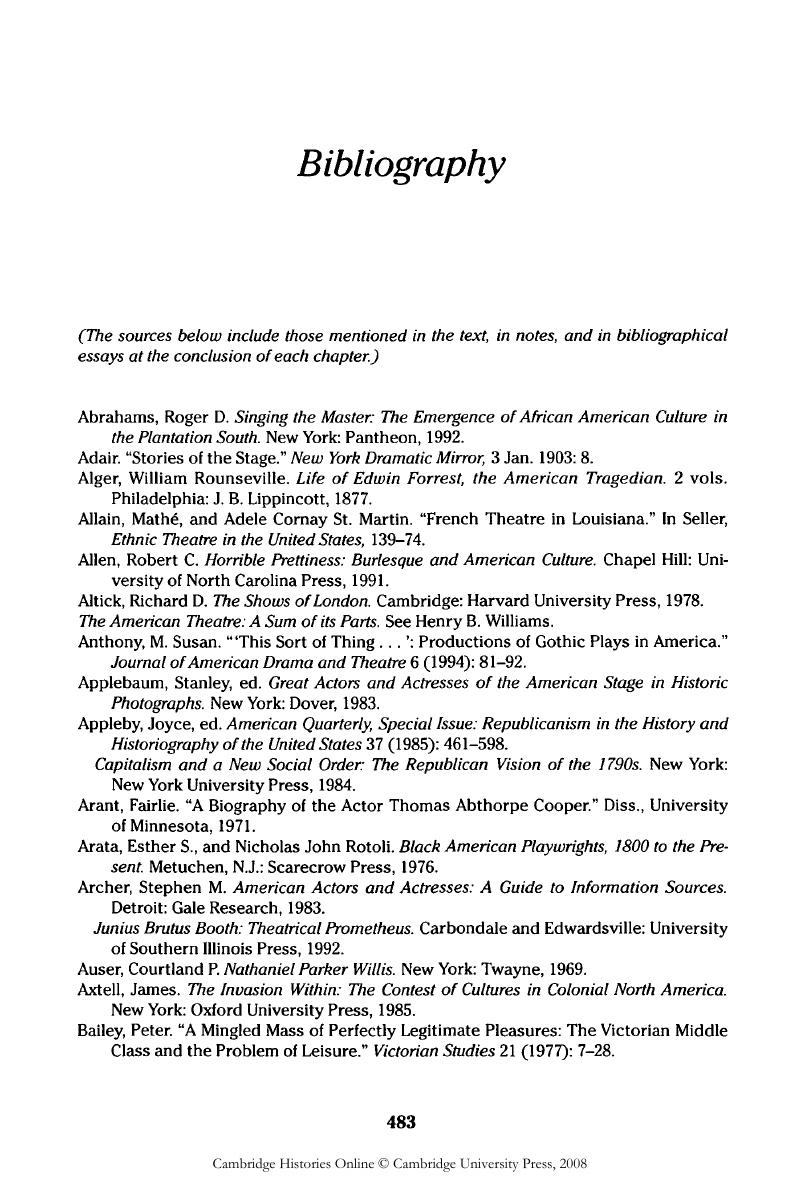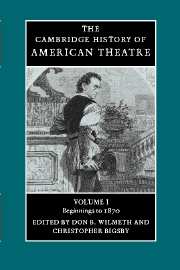Book contents
- Frontmatter
- Introduction
- Timeline: beginnings to 1870
- 1 American theatre in context, from the beginnings to 1870
- 2 Structure and management in the American theatre from the beginning to 1870
- 3 Plays and playwrights
- 4 The Actors
- 5 Scenography, stagecraft, and architecture in the American theatre: beginnings to 1870
- 6 Paratheatricals and popular stage entertainment
- Bibliography
- References
Bibliography
Published online by Cambridge University Press: 28 March 2008
- Frontmatter
- Introduction
- Timeline: beginnings to 1870
- 1 American theatre in context, from the beginnings to 1870
- 2 Structure and management in the American theatre from the beginning to 1870
- 3 Plays and playwrights
- 4 The Actors
- 5 Scenography, stagecraft, and architecture in the American theatre: beginnings to 1870
- 6 Paratheatricals and popular stage entertainment
- Bibliography
- References
Summary

- Type
- Chapter
- Information
- The Cambridge History of American Theatre , pp. 483 - 506Publisher: Cambridge University PressPrint publication year: 1998



